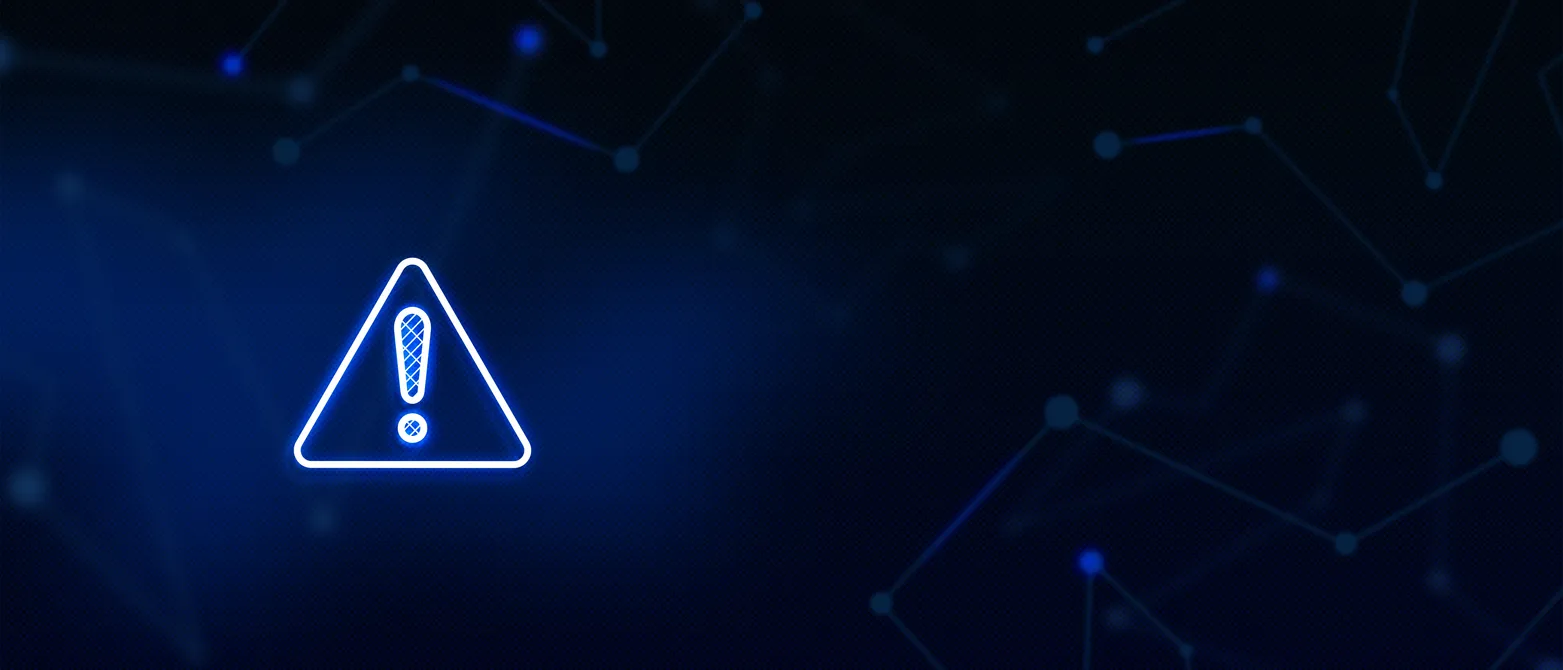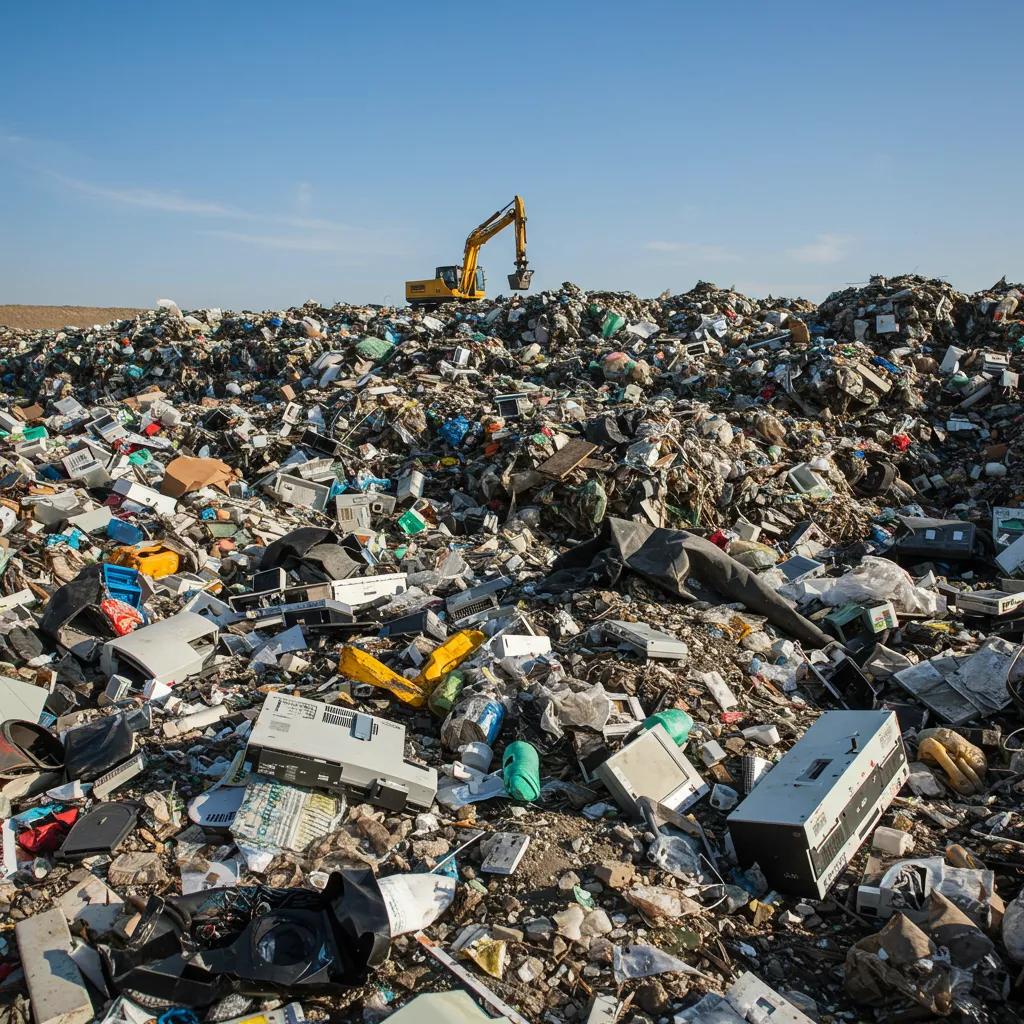5 Common ITAD Mistakes and How to Avoid Them
Quick Summary: Key ITAD Mistakes to Avoid
- Simple deletion is not enough; always use certified data erasure methods.
- Non-compliant ITAD leads to severe GDPR and WEEE fines, plus legal action.
- Prioritise reuse, refurbishment, and recycling to reduce e-waste and your carbon footprint.
- Accurate asset inventory and a robust chain of custody prevent data loss and audit failures.
- Partner only with certified ITAD providers to ensure security, compliance, and value recovery.
Is your organisation leaving itself open to data breaches and hefty fines by overlooking critical errors in your IT asset disposal (ITAD) strategy? This guide, “5 Common ITAD Mistakes and How to Avoid Them” offers UK organisations a clear roadmap for secure ITAD services, data destruction, unwavering regulatory compliance, and responsible environmental stewardship. We expose the five most damaging mistakes—from insufficient data erasure to poor vendor selection—detail their repercussions under GDPR and the WEEE Directive, and demonstrate how certified processes, meticulous inventory management, and sustainable practices safeguard your information and your reputation. Collaborating with a specialist provider like Astralis Technology ensures a seamless, compliant ITAD experience at every stage. Before we dive into data destruction failures, let’s examine the most common errors that leave sensitive assets vulnerable.
- Common Data Destruction Errors
- Ignoring Regulatory Compliance
- Overlooking Environmental Responsibility
- Poor Asset Inventory and Tracking
- Choosing the Wrong ITAD Partner
What Are the Most Common Data Destruction Errors in ITAD?
Data destruction errors occur when end-of-life devices retain recoverable information, compromising security and compliance. These mistakes typically stem from misusing deletion tools, disregarding device-specific characteristics, and skipping verification steps—each leaving raw sectors or magnetic traces accessible to forensic analysis. For example, merely formatting a hard drive without secure wiping leaves file structures intact, allowing for data recovery when complete sanitisation was essential.
The following errors frequently surface during IT asset disposal:
- Simply deleting files instead of performing certified wiping: Leaves data fragments recoverable, posing a significant breach risk.
- Applying HDD erasure techniques to SSDs: Fails to address solid-state wear-levelling mechanisms, leaving data intact on SSDs.
- Omitting verification of sanitisation outcomes: Overlooks the risk of residual data, leading to false confidence in data security.
- Relying on uncertified erasure software: Means no audit trails or compliance proof is generated, making regulatory adherence impossible to prove.
- Neglecting physical destruction for decommissioned drives: Allows for hidden data recovery possibilities, especially for severely damaged or non-functional media.
These lapses pave the way for breaches and penalties, so the next crucial step is understanding why deletion alone is insufficient for protecting sensitive data.
Why Is Simple Deletion Not Enough to Protect Sensitive Data?
Simple deletion merely removes file pointers rather than overwriting the data itself, leaving raw sectors untouched and accessible to readily available forensic tools. This vulnerability persists until the data is overwritten, potentially exposing personal, financial, and strategic information to unauthorised access. Recognising that deletion does not equate to erasure prompts organisations to adopt certified sanitisation methods that guarantee irreversible data removal.
What Certified Data Erasure Methods Prevent Data Breaches?
Certified data erasure methods encompass software wiping, degaussing, and physical destruction, each ensuring the complete removal of electronic data and shielding organisations from breach liabilities.
Certified methods include:
- Software Wiping – Overwrites every data bit with random patterns, generating audit-ready logs. Erasure performed with Ziperase, aligned to NIST SP 800-88 Rev.1. Best for functional HDDs and some SSDs.
- Degaussing – Demagnetises hard drives and tapes, rendering stored data unreadable. Ideal for magnetic media where physical destruction isn't immediately feasible.
- Physical Destruction – Shreds or pulverises media into particles too small for data reconstruction. The most secure method for all media types, especially non-functional drives.
Employing these techniques prevents unauthorised data recovery and provides irrefutable proof of compliance with GDPR and WEEE regulations.
How Do SSDs and HDDs Differ in Data Destruction Requirements?
SSDs and HDDs differ significantly in how they store and manage data, necessitating tailored sanitisation methods for irreversible deletion.
Selecting the appropriate method for each device type prevents residual data risks and aligns disposal practices with industry best standards, moving us closer to robust compliance safeguards.
The Severe Consequences of ITAD Failures: Fines, Legal Action, and Reputational Damage
Poor ITAD practices that leave data recoverable can lead to severe penalties and significant reputational damage. Organisations may face:
- GDPR Fines of up to €20 million or 4% of global turnover, whichever is higher. These fines are designed to be effective, proportionate, and dissuasive, emphasizing the critical importance of robust data protection practices. Mitigation: Implement certified data erasure and maintain comprehensive audit trails.
- WEEE Prosecution and associated environmental remediation costs, including potential clean-up expenses, for non-compliant disposal of e-waste.
- Legal Liability for compensation claims from data subjects whose personal data has been compromised. Mitigation: Ensure all data destruction is verifiable and legally defensible.
- Reputational Damage that erodes customer trust and loyalty, impacting brand perception and market value. Mitigation: Partner with accredited ITAD providers and communicate secure practices.
- Operational Disruption due to breach investigations, regulatory audits, and the diversion of internal resources. Mitigation: Proactive compliance and robust incident response planning.
- Audit Failures leading to contract termination, loss of business, and severe financial repercussions.
Understanding these severe consequences highlights the critical need for rigorous data destruction protocols, which we will explore next, alongside common legal compliance pitfalls.
How Does Maintaining an Audit Trail Ensure Regulatory Compliance?
An audit trail meticulously records every phase of the ITAD process—from initial collection to the final data erasure report and recycling certificate—providing transparent chain-of-custody evidence. This documented history demonstrates adherence to GDPR and WEEE requirements, simplifies inspections, and significantly mitigates liability by proving that each asset underwent certified destruction protocols. It serves as irrefutable proof of due diligence, ensuring full accountability and reducing the risk of lost or compromised assets.
Key Takeaways: Data Destruction
- Deletion is not erasure: Simple file deletion leaves data recoverable. Always use certified methods.
- Tailor methods to media: HDDs, SSDs, tapes, and flash drives require specific destruction techniques.
- Verify and document: Always verify erasure outcomes and maintain detailed audit trails for compliance.
- Consequences are severe: Data breaches from poor ITAD lead to hefty fines, legal action, and reputational damage.
How Can Ignoring Regulatory Compliance Impact Your IT Asset Disposal?
Overlooking regulatory compliance in ITAD exposes organisations to legal action, substantial financial penalties, and failed audits. UK legislation, including the GDPR and the WEEE Directive, mandates certified destruction, meticulous record-keeping, and transparent reporting; non-compliance jeopardises both data security and environmental responsibilities. Comprehensive compliance integrates chain-of-custody documentation, third-party certification, and regular audits to effectively avert regulatory breaches.
The following table contrasts compliant and non-compliant outcomes:
Establishing these robust controls ensures regulatory alignment and provides essential protection against legal exposure.
What UK Regulations Must ITAD Services Comply With?
Key UK regulations governing ITAD include:
- GDPR (General Data Protection Regulation): Mandates secure processing and destruction of personal data, requiring certified data sanitisation and comprehensive reporting.
- WEEE Directive (Waste Electrical and Electronic Equipment Directive): Governs the collection, treatment, recycling, and recovery of e-waste, requiring environmentally sound disposal and detailed recycling logs.
- Data Protection Act 2018: Incorporates GDPR into domestic UK law, reinforcing the requirements for data security and individual rights.
Each mandates secure data sanitisation, environmental reporting, and precise asset tracking to safeguard individuals’ rights and prevent pollution. A thorough understanding of these frameworks is essential for designing compliant ITAD workflows.
What Are Best Practices for Partnering with Certified ITAD Providers?
Partnering with a certified ITAD provider requires diligent verification of accreditations, thorough due diligence, and clearly defined contractual terms. Best practices include:
- Validate Certifications: Verify accreditations such as ISO 27001 (Information Security), ISO 14001 (Environmental Management), ISO 9001 (Quality Management), Cyber Essentials, Environment Agency registration, and alignment with ADISA Standard 8.0.
- Request Sample Documentation: Review sample destruction certificates, audit logs, and environmental reports to ensure they meet your standards.
- Define SLAs Clearly: Establish Service Level Agreement (SLA) terms for turnaround times, reporting frequency, and data breach notification protocols.
- Conduct Site Visits: If possible, tour destruction facilities or request virtual walkthroughs to assess security measures and operational procedures.
- Review Client Testimonials: Seek references and review case studies to gauge the provider's track record and client satisfaction.
- Confirm Insurance Coverage: Ensure the provider carries adequate insurance, including professional liability and cyber liability, to cover potential risks.
- Align Environmental Commitments: Verify that their environmental practices align with your organisation's circular-economy principles and ESG goals.
Implementing these steps secures legal compliance and guarantees a high standard of service quality.
Key Takeaways: Regulatory Compliance
- Know your regulations: GDPR, WEEE, and the Data Protection Act 2018 are non-negotiable for UK ITAD.
- Document everything: A robust audit trail and chain of custody are your best defence against penalties.
- Choose certified partners: Look for accreditations like ISO 27001, ISO 14001, ISO 9001, Cyber Essentials, and Environment Agency registration.
- Due diligence is critical: Thoroughly vet potential ITAD providers to ensure they meet all compliance requirements.
Why Is Overlooking Environmental Responsibility a Critical ITAD Mistake?
Neglecting environmental responsibility in ITAD contributes to e-waste pollution, accelerates resource depletion, and can lead to regulatory breaches. Responsible disposal embraces circular-economy principles—prioritising reuse, refurbishment, and compliant recycling—to minimise landfill impact and support Environmental, Social, and Governance (ESG) reporting. Sustainable ITAD transforms waste into valuable resources, reducing carbon footprints and safeguarding corporate reputation.
Before outlining effective circular-economy tactics, let’s quantify the pollution risks associated with improper disposal.
How Does Improper IT Asset Disposal Contribute to E-Waste Pollution?
Improper disposal of IT assets releases hazardous substances (e.g., lead, mercury, cadmium) and valuable materials (e.g., gold, silver, copper) into landfills, creating toxic runoff that contaminates soil and water, and wasting recoverable metals. The UK alone generates over 1.65 million tonnes of e-waste annually, a significant portion of which ends up in landfills or is exported illegally. This environmental damage drives stricter WEEE enforcement and contributes to rising disposal costs, while also posing health risks to communities. These practices reduce demand for raw materials and embed sustainability into asset lifecycle strategies.
What Are Circular Economy Principles in Sustainable ITAD?
Circular economy principles in ITAD focus on extending the life and value of IT assets, moving beyond the traditional “take-make-dispose” linear model:
- Reuse – Refurbishing devices for continued secondary deployment within the organisation or donation. Benefit: Maximises asset utility and reduces procurement costs.
- Refurbishment – Testing, repairing, and updating hardware for resale on secondary markets. Benefit: Generates revenue and extends product lifespan.
- Recycling – Recovering valuable metals and plastics through certified, environmentally sound processes. Benefit: Conserves natural resources and prevents hazardous waste.
- Repair – Fixing faulty components to extend the operational life of devices. Benefit: Reduces the need for new purchases and minimises waste.
Adopting these practices reduces the demand for virgin raw materials and embeds sustainability into asset lifecycle strategies.
How Can Businesses Reduce Their Carbon Footprint Through ITAD?
By prioritising device refurbishment over immediate destruction, meticulously tracking carbon savings, and reporting on ESG metrics, organisations can:
- Divert significant waste streams from landfills, reducing methane emissions.
- Lower Scope 3 emissions associated with the manufacturing of new hardware, as fewer new devices are needed.
- Generate revenue through the remarketing of refurbished equipment, supporting a more sustainable business model.
- Enhance brand reputation and attract environmentally conscious customers and investors.
Quantifying these positive outcomes enhances environmental performance and builds stakeholder trust.
What Are the Risks of Neglecting Sustainability in IT Asset Disposal?
Ignoring sustainability in ITAD risks regulatory fines under WEEE legislation, exposes brands to accusations of greenwashing, and forfeits potential value recovery from reuse. Failing to integrate circular-economy practices undermines ESG goals and detracts from corporate social responsibility, making sustainability a core imperative for both compliance and reputation management. It can also lead to negative public perception and impact investor relations.
Key Takeaways: Environmental Responsibility
- E-waste is a major problem: Improper disposal pollutes and wastes valuable resources.
- Embrace circularity: Prioritise reuse, refurbishment, and certified recycling to minimise environmental impact.
- Reduce your carbon footprint: Sustainable ITAD practices directly contribute to lower emissions and better ESG scores.
- Avoid reputational damage: Neglecting sustainability can lead to fines, greenwashing accusations, and loss of public trust.
How Does Poor Asset Inventory and Tracking Lead to ITAD Failures?
Inadequate inventory and tracking create critical blind spots, leading to misplaced or misrouted assets, undocumented data destruction, and ultimately, failed audits. Accurate records and real-time tracking ensure that every device enters the correct erasure workflow, supporting compliance and preventing potential data leakage.
The following sections explore how robust asset management effectively closes these critical gaps.
Why Is Accurate IT Asset Inventory Essential for Secure Disposal?
An accurate IT asset inventory meticulously catalogues each device’s make, model, serial number, and data classification. This detailed registry ensures that all end-of-life equipment receives the appropriate sanitisation treatment, eliminating the risk of overlooked storage media and residual data that could lead to breaches. It also provides a clear audit trail for every asset from acquisition to disposal.
How Does Chain of Custody Protect Against Data and Compliance Risks?
Chain of custody meticulously labels every stage of the ITAD process—from initial collection through to final destruction—linking physical assets to documented procedures. This accountability prevents unauthorised access, supports thorough forensic audits, and provides verifiable compliance records in the event of regulatory inspection. It ensures that responsibility for the asset is clearly defined at every transfer point, significantly reducing the risk of loss or compromise.
What Tools and Systems Improve IT Asset Tracking and Reporting?
Modern asset management platforms integrate barcode scanning, GPS-enabled logistics, and cloud-based reporting to automate tracking from initial deployment through to final disposal.
These advanced systems deliver crucial visibility, significantly reduce manual errors, and thoroughly prepare organisations for rigorous audit scrutiny.
How Can Businesses Avoid Audit Failures Through Better Asset Management?
Implementing scheduled reconciliation processes, cross-functional sign-off procedures, and robust exception reporting ensures that no device evades documented destruction. Regular audits comparing inventory records against erasure logs effectively close gaps and demonstrate that every asset has followed certified disposal pathways. This proactive approach transforms potential audit failures into opportunities to demonstrate robust control and compliance.
Key Takeaways: Asset Inventory & Tracking
- Accuracy is paramount: A detailed, up-to-date asset inventory is the foundation of secure ITAD.
- Implement chain of custody: Document every transfer to maintain accountability and prevent loss.
- Leverage technology: Use RFID, cloud platforms, and automated workflows for efficient tracking.
- Regular reconciliation: Compare inventory with disposal records to identify and rectify discrepancies before audits.
What Are the Risks of Choosing the Wrong ITAD Partner?
Selecting an unaccredited or inexperienced ITAD partner can compromise data security, lead to compliance breaches, and diminish value recovery. Inadequate providers may employ uncertified destruction methods, maintain poor documentation, and neglect environmental obligations, exposing organisations to regulatory action and lost revenue.
Below, we outline the key selection criteria for identifying a trusted ITAD provider.
Why Is Certification and Accreditation Crucial When Selecting an ITAD Provider?
Certifications such as ISO 9001 (Quality Management), ISO 14001 (Environmental Management), ISO 27001 (Information Security Management), Cyber Essentials, and Environment Agency registration provide definitive proof that an ITAD provider adheres to rigorous quality, environmental, and information-security standards. Alignment with ADISA Standard 8.0 further demonstrates commitment to best practices. These accreditations ensure reliable data erasure, complete audit trails, and sustainable recycling practices that align with legal obligations. These certifications are independently verified, offering an objective measure of a provider’s capabilities and commitment to best practices.
These essential accreditations guarantee secure data destruction, regulatory compliance, and overall service excellence.
What Due Diligence Steps Should Businesses Take Before Hiring an ITAD Vendor?
Conducting thorough due diligence requires a systematic approach to vetting potential partners:
- Verify Certifications: Request current copies of all relevant certifications (ISO 27001, ISO 14001, ISO 9001, Cyber Essentials, Environment Agency registration, etc.) and confirm their validity, along with evidence of ADISA Standard 8.0 alignment.
- Review Audit Reports: Ask for recent independent audit reports to assess their compliance and security performance.
- Conduct Site Visits/Virtual Tours: Inspect their facilities to observe security protocols, data destruction processes, and environmental practices firsthand.
- Check References: Speak to existing clients to understand their experience with the vendor's reliability, service quality, and responsiveness.
- Examine Service Level Agreements (SLAs): Scrutinise contract terms, including data destruction guarantees, reporting timelines, liability clauses, and insurance coverage.
- Assess Data Security Protocols: Understand their physical security, logical security, and employee background check procedures.
- Evaluate Environmental Practices: Confirm their commitment to circular economy principles, zero-landfill policies, and transparent environmental reporting.
- Review Financial Stability: Ensure the vendor is financially sound to guarantee long-term service continuity.
These diligent steps effectively mitigate risks and establish confidence in a vendor’s capabilities.
How Does a Poor ITAD Partner Affect Data Security and Value Recovery?
An underqualified partner risks incomplete data erasure, leading to potential data breaches and GDPR fines, while simultaneously neglecting remarketing opportunities that could recover valuable asset worth. Such failures significantly harm brand reputation and squander potential revenue from secondary hardware markets. They may also use uncertified methods, leading to non-compliance and environmental damage, further compounding the risks.
What Criteria Define a Trusted and Transparent ITAD Service Provider?
- Demonstrable Accreditations: Holds industry-recognised certifications (ISO 27001, ISO 14001, ISO 9001, Cyber Essentials, Environment Agency registration) and demonstrates alignment with ADISA Standard 8.0, all current and verifiable.
- Detailed Documentation: Provides clear, verifiable destruction and recycling certificates, along with comprehensive audit logs and chain-of-custody reports.
- Clear Service-Level Agreements: Offers transparent SLAs outlining turnaround and reporting timelines, data breach notification, and liability.
- Commitment to Sustainability: Shows a strong commitment to circular-economy practices, zero-landfill policies, and transparent ESG disclosures.
- Robust Security Measures: Implements stringent physical and logical security at all facilities, with background-checked personnel.
- Financial Stability: Is a well-established and financially secure company, ensuring long-term partnership viability.
Meeting these stringent standards ensures peace of mind and maximises the return on retired assets.
Key Takeaways: ITAD Partner Selection
- Certifications are non-negotiable: Look for ISO 27001, ISO 14001, ISO 9001, Cyber Essentials, Environment Agency registration, and ADISA Standard 8.0 alignment.
- Thorough due diligence: Verify everything from certifications to insurance and client references.
- Poor partners equal high risk: Incomplete erasure, compliance breaches, and lost revenue are direct consequences.
- Transparency builds trust: Choose providers with clear SLAs, detailed reporting, and strong ESG commitments.
How Can UK Businesses Integrate Proactive ITAD Into Their IT Lifecycle Management?
Proactive ITAD planning embeds disposal considerations from the outset of procurement, maintenance, and upgrade cycles, effectively minimising end-of-life bottlenecks and preventing missed assets. Early alignment between IT operations and disposal policies significantly reduces risk, lowers overall costs, and uncovers valuable remarketing opportunities.
Below are actionable steps to integrate ITAD seamlessly from day one.
Why Is Early ITAD Planning Important for Risk Reduction?
Planning ITAD at the procurement stage allows organisations to tag items for future disposal, assign appropriate data-classification protocols, and budget effectively for certified destruction—thereby avoiding end-of-life bottlenecks and untracked assets that heighten breach risks. This foresight ensures that every asset has a clear, secure, and compliant exit strategy from the moment it enters the organisation.
How Does ITAD Fit Into Overall IT Asset Lifecycle Strategies?
ITAD complements procurement and maintenance by effectively closing the loop: devices transition from deployment to decommissioning under unified policies that encompass data sanitisation, refurbishment, and recycling. This continuity supports sustainability goals and provides accurate financial forecasts for asset replacement. By integrating ITAD into the entire lifecycle, businesses can optimise asset utilisation, minimise waste, and ensure continuous compliance.
What Are the Benefits of Continuous IT Asset Valuation and Remarketing?
Continuous valuation assesses market demand for refurbished equipment, enabling:
- Maximised Value Recovery: Through timely remarketing efforts, selling assets when their market value is highest.
- Reduced Capital Expenditure (CapEx): By offsetting new hardware purchases with revenue generated from retired assets.
- Transparent Asset Depreciation: Tracking for accurate financial reporting and better budget planning.
- Enhanced Sustainability: Extending the life of equipment contributes to circular economy goals and reduces environmental impact.
These strategic practices transform disposal from a cost centre into a potential revenue stream.
How Can Channel Partners Avoid Common ITAD Mistakes in Their Offerings?
MSPs and resellers can significantly strengthen their ITAD services by:
- Including Certified Erasure: Offering certified erasure options within their standard service bundles, not as an optional extra.
- Providing Audit-Ready Documentation: Supplying clients with comprehensive, audit-ready destruction certificates and chain-of-custody reports as a matter of course.
- Advising on Circular Economy: Educating clients on circular-economy programmes, remarketing channels, and the ESG benefits of sustainable ITAD.
- Comprehensive Staff Training: Training sales and technical teams comprehensively on compliance requirements (GDPR, WEEE) and the environmental benefits of proper ITAD.
- Partnering with Accredited Providers: Collaborating with certified ITAD specialists to ensure their offerings meet the highest standards.
Embedding these crucial features elevates partner offerings and safeguards customer data throughout every stage of the IT lifecycle.
Key Takeaways: Proactive ITAD Integration
- Plan early: Integrate ITAD considerations from procurement to decommissioning to mitigate risks.
- Lifecycle approach: Embed ITAD into your overall IT asset lifecycle for seamless, compliant transitions.
- Value recovery: Continuous asset valuation and remarketing can turn disposal into a revenue stream.
- Empower channel partners: Equip MSPs and resellers with the knowledge and tools to offer robust, compliant ITAD services.
Ready to Secure Your ITAD Process?
Partnering with an expert ITAD provider transforms disposal from a hidden risk into a tangible strategic advantage. Astralis Technology delivers certified data sanitisation, robust audit trails, and sustainable recycling solutions that protect your information, enhance your reputation, and safeguard the planet. Contact Astralis today to secure compliant, efficient, and eco-friendly IT asset disposition for your organisation.
Laura Cooper is the Chief Marketing Officer at Astralis Technology, where she spearheads initiatives to educate UK businesses on the critical importance of secure, compliant, and sustainable IT Asset Disposal. With a deep understanding of data security, regulatory frameworks like GDPR and WEEE, and circular economy principles, Laura is passionate about helping organisations mitigate risks, enhance their environmental footprint, and unlock value from their end-of-life IT assets. Her expertise ensures that Astralis Technology remains at the forefront of responsible ITAD solutions.






